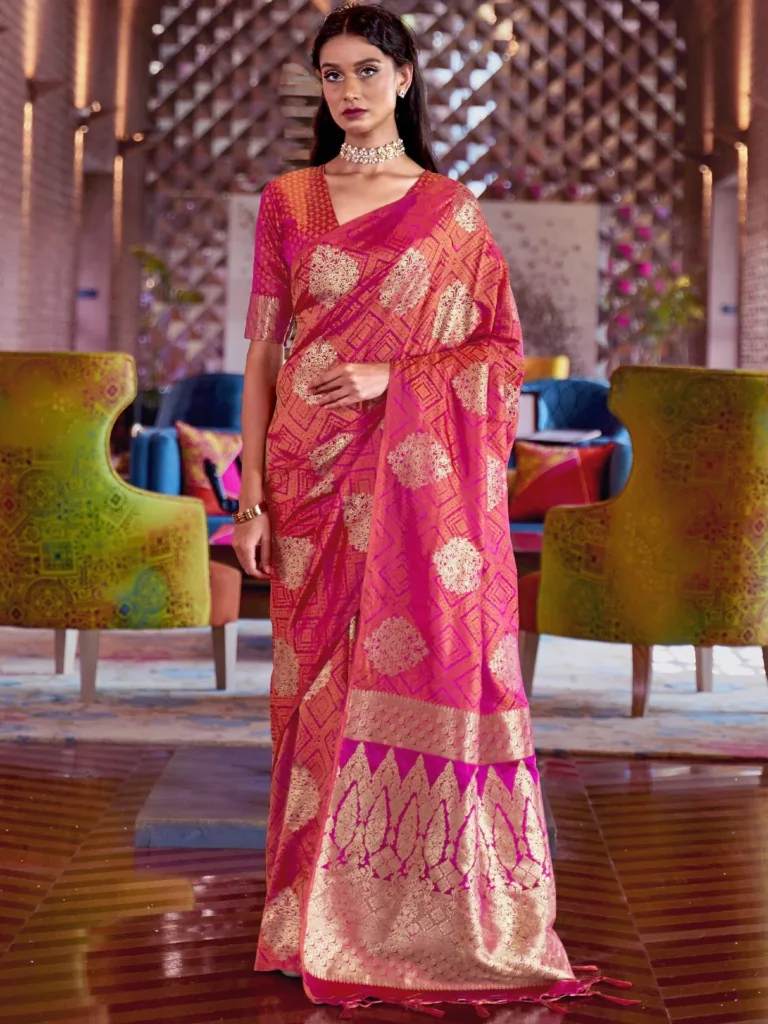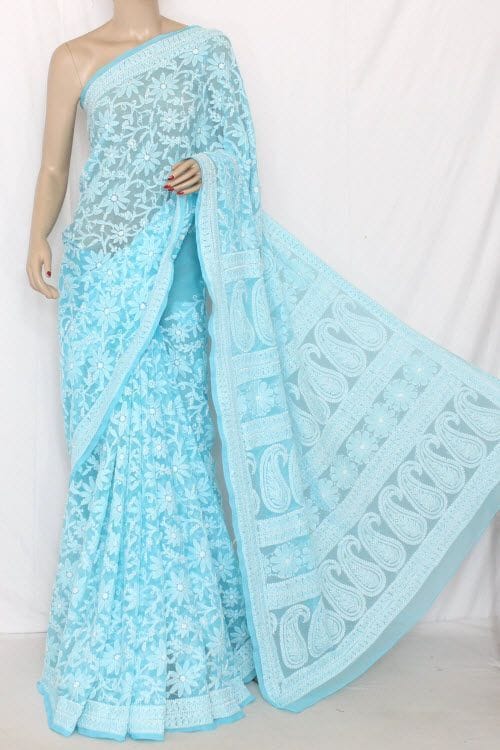Tradition and Elegance of Indian Sarees
India, a land of rich traditions and diverse cultures, has gifted the world with one of the most graceful attires—the saree. Worn by women across the country for centuries, the saree is more than just a piece of fabric; it is a symbol of heritage, artistry, and timeless elegance.
A Legacy Woven in Threads
The history of the saree dates back over 5,000 years, with references in ancient texts like the Rigveda. Over time, each region of India developed its own unique weaving techniques, patterns, and draping styles, making the saree a canvas of cultural expression.
Diverse State diverse style
India’s vast landscape has given birth to countless varieties of sarees, each with its own charm:
- Dhaniakhali ( Hooghly): are made on dobby looms. Dobby weaves have small, geometric, textured, frequently repeated woven-in designs.

2.Banarasi Silk (Uttar Pradesh): Known for its luxurious gold and silver zari work, perfect for weddings and grand occasions.

3. Kanjeevaram Silk (Tamil Nadu): Rich, vibrant colors with intricate temple borders, favored for bridal wear.

4.Chikankari Saree (Lucknow): Delicate hand-embroidered sarees that exude grace and sophistication.

5.Bandhani (Rajasthan & Gujarat): A tie-dye masterpiece in bright hues, ideal for festive celebrations.

6. Paithani (Maharashtra): A royal weave featuring peacock and lotus motifs in dazzling colors.

7.Tant & Jamdani (West Bengal): Lightweight cotton sarees perfect for everyday elegance.

8. Muga Silk (Assam): A rare golden silk saree, highly prized for its durability and sheen.

9. Kota Doria Saree (Rajasthan):are made of a light-weight fabric called Kota, which is a combination of silk and cotton.

10. Assam silk sarees: are made of mulberry silk that is produced in the Assam region of India.

The Art of Draping
With over 100 different ways to drape a saree, the style varies by region and occasion. The popular Nivi drape from Andhra Pradesh is the most common, while the Bengali, Coorgi, and Nauvari styles add a unique touch to this timeless garment.
Saree in Modern Fashion
Despite changing trends, the saree continues to be a wardrobe essential. Designers are blending traditional handloom sarees with contemporary aesthetics, making them versatile for both office wear and grand occasions. Even Bollywood and international celebrities are embracing sarees on red carpets, proving their global appeal.
Why Every Woman Needs a Saree
✔️ Grace & Elegance: A saree enhances femininity like no other attire.
✔️ Sustainability: Handwoven sarees support artisans and promote slow fashion.
✔️ Versatility: Wear it traditionally or with a modern twist—drape it your way!
Final Thoughts
A saree is not just an outfit—it’s a story of heritage, skill, and beauty woven into six yards. Whether you choose a classic silk saree for a wedding or a breezy cotton saree for daily wear, each drape connects you to India’s rich cultural roots.
So, embrace the saree, celebrate tradition, and wear your heritage with pride!
✨ Explore Urban Shilp’s exquisite, handcrafted sarees today! ✨
📲 Shop Now: https://urbanshilp.com
Contact Us: 93118 13102
#UrbanShilp #HandloomSarees #IndianSaree #EthnicWear #SupportArtisans #HandmadeWithLove #Dhaniakhali saree






Add comment